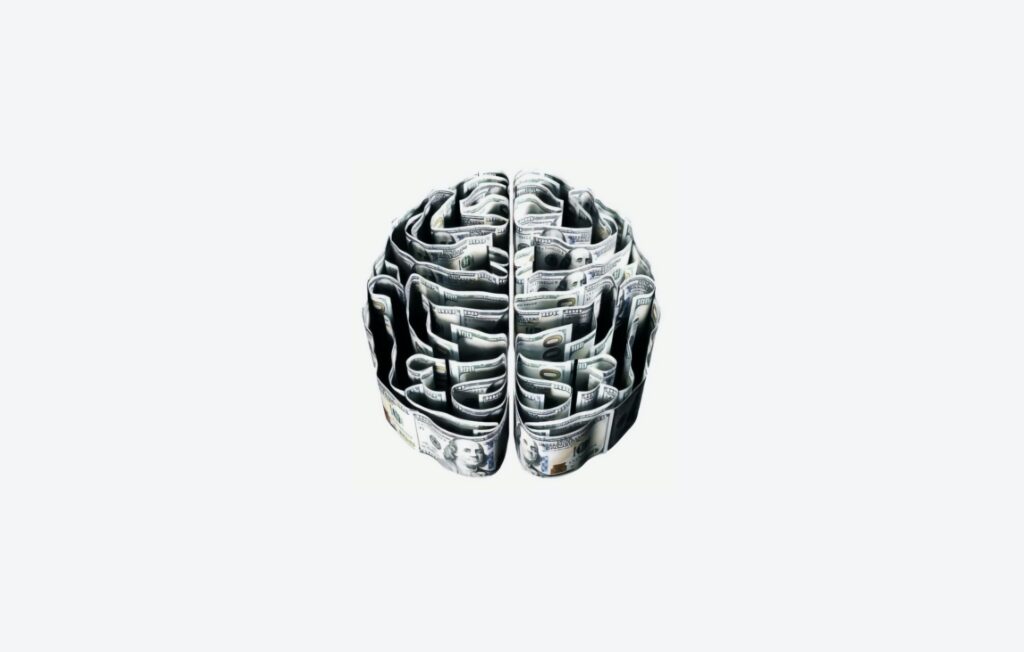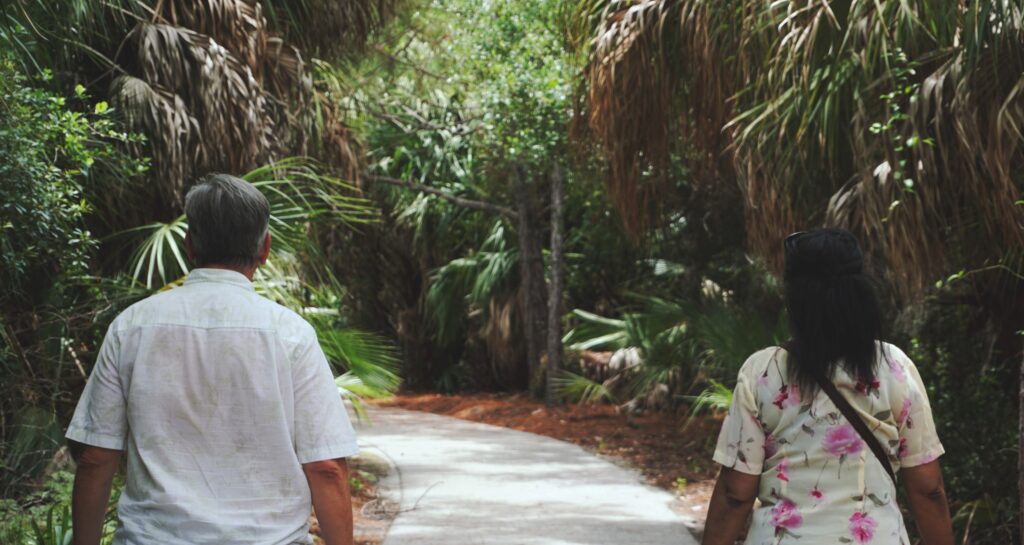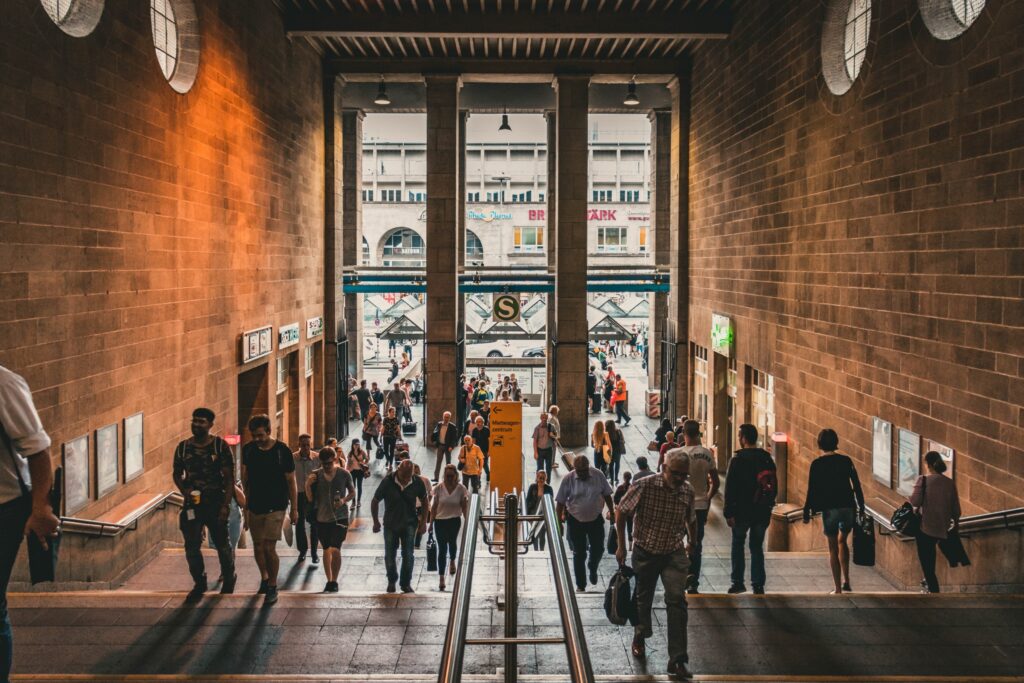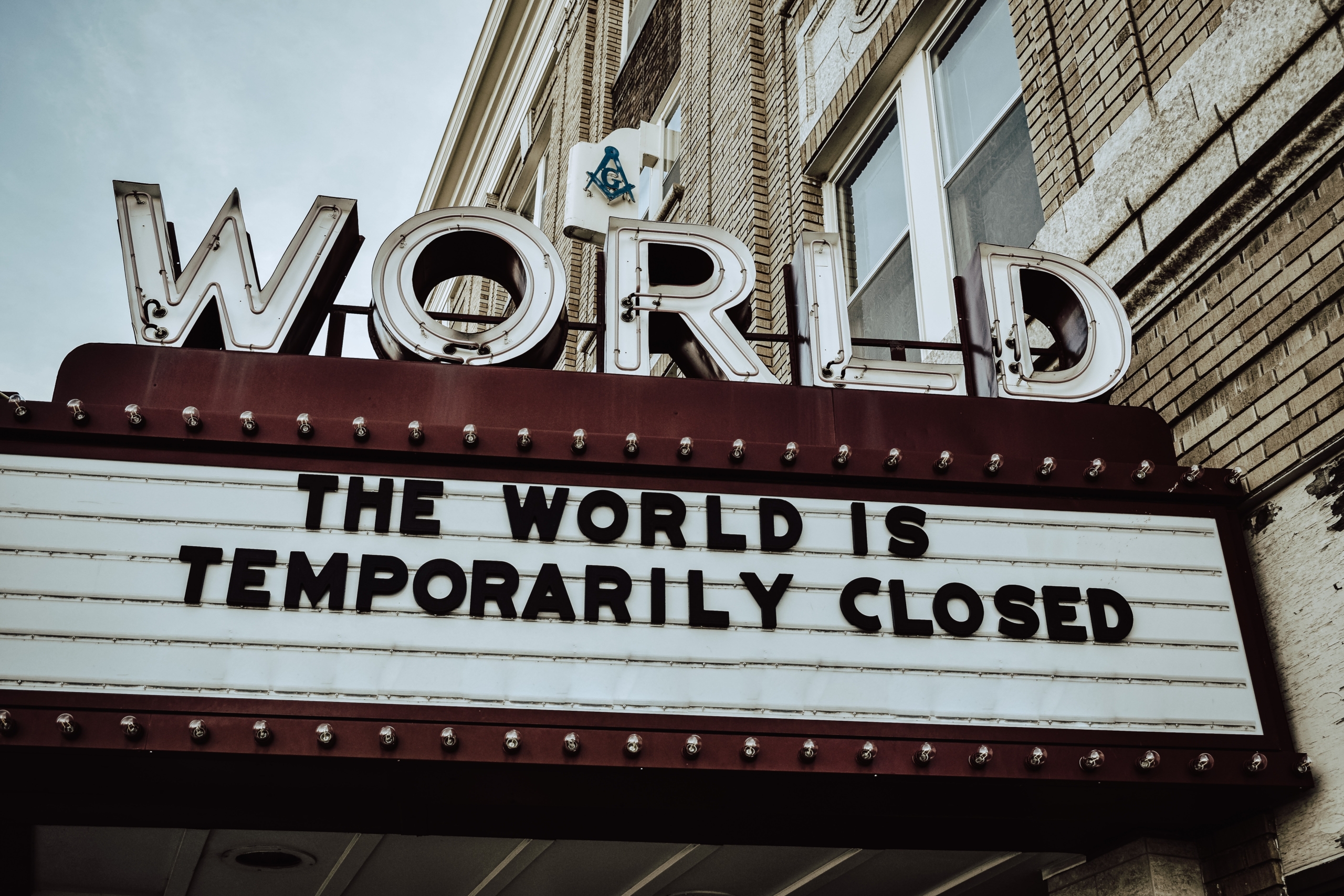Cities in the Pandemic: What They Contribute and What We Miss
Even if Covid-19 has not impacted one’s health directly, the global pandemic severs almost everyone from the rhythms and environments of former routines. The settings in which we played out or lives are now either inaccessible, replaced by digital substitutes, or heavily adapted. Home can feel very crowded or very lonely, work is disrupted and reconfigured, and our social lives have been turned upside-down. The lack of access to environments we traditionally rely on to relieve stress, be productive, and connect with others require either a temporary replacement or a completely new approach.
Yet amidst this crisis lies the opportunity for reimagination and redesign. We look to Science-Informed Design (SiD) and the Conscious Cities approach to explore aspects of metacognition, restoration, and uncertainty, and how cities afford us such functions on a day-to-day basis. Furthermore, a better understanding of the role of public space in our lives can lead to more informed solutions during the pandemic, and when we eventually emerge into the post-pandemic city. We will also look to provide some easy SiD solutions to accommodate different needs, in recognition that our cities have become our homes and that our environments, more than ever, must be conscious.

Metacognition in the City
As the city and its urban fabric continue to be disrupted during the Covid-19 crisis, our minds feel confined, intruded, and disoriented by the changing nature of our engagement with the spaces that surround us. Our mind is always ‘situated’.1 It is inseparable from physical context; be it street, workplace, or home. We are so intertwined with our environment that we have developed cognitive mechanisms to prioritize attaining external information more relevant to our sense of identity.
Metacognition is about both what we know about cognition and how this knowledge is used to determine actions. We constantly process information about ourselves and the ‘world out there’. This approach to identity proposes that people shape their identities by investing themselves in various spheres, be it social, cultural, or spatial. This ‘identity-related’ behavior becomes especially important in times of crisis when people are confronted with situations that could make them question their role in the world.2
Cities can offer unlimited opportunities for mind wandering and being mindful. This shifting of attention during long city walks or transitioning from one site to another helps us regulate our emotions and often stimulates our creative thinking or problem-solving capacity. In person-space interactions, certain metacognitive channels seem to be prevailing: multisensory perception, navigation, and wayfinding in novel surroundings. Social metacognition which enhances awareness of our thought processes and motivation and helps us understand what people need in social settings is another crucial channel.3
Group membership and a sense of belonging, supported by some of the city’s shared and public spaces also provide individuals with meaning, support, and agency that positively impact health. However, when our group membership is at risk, issues with our social identity can become a burden to our health and well‐being.4
Homes and cities are part of our identities and our cognitive tools. This aspect of the environment/person relationship is addressed by Enactivism, which argues that cognition arises through a dynamic interaction between an acting organism and its environment.5 The notion that our environment is an extension of our cognition, (the embedded mind theory) further implicates that parts of our cognitive skills and tools rely on access to spaces outside of ourselves.
During the pandemic, and especially during lockdowns, losing access to specific environments not only denies us the opportunity to enact parts of our identity but also cuts us off from parts of our own cognition that has been situated elsewhere.

Restoration in the City
Everyone has a personal narrative that frames their relationship to their surroundings: someone who spends a great deal of time engaged with their outdoor environs (e.g. an avid birder or gardener) will feel the loss of the outdoors more acutely and immediately than a self-proclaimed ‘indoor person.’
Biophilia—the human affinity for the sights, sounds, and settings of nature—is baked into our biology. Even after generations of dwelling in cities, our brains are soothed by nature: views of natural surroundings are positively correlated with various benefits to the mind and body.67 While the great outdoors is not central to every person’s identity, restorative spaces such as parks, paths, and gardens allow us room to re-energize, restore, and mind-wander. This is always relevant, but especially in times of crisis when we feel our sense of identity shaken; nature is considered the ideal restorative environment, a typology important for stress recovery and renewal of cognitive resources.89
Attention Restoration Theory (ART), stipulates that restoration is a chain-reaction of cognitive processes which ultimately leave one with a clear mind and renewed capacity for attention and introspection. This process can be encouraged by the ‘affordances’ offered by spaces.10
There are four pillars of a classic restorative environment:
- Separation from stressors (visual, acoustic, and otherwise);
- Space to wander (physically and mentally);
- Novelty: stimuli to provide ‘gentle fascination,’ (people passing by);
- Compatibility with a person’s desires and expectations for that space.
Losing access to the parks and paths of the world beyond our home robs us of the physical/cognitive stimulation, novelty, and sociocultural benefits that biophilic urban and rural spaces provide. We can find ways to carve restorative moments into our daily lives in our domestic spaces, however, both during and after the pandemic, cities must incorporate more opportunities for restoration. One way to do this is to make sure public parks are among the first spaces re-opened as we transition out of quarantine. Biophilic design principles could blur the boundaries between nature and the city, thus creating a renewed capacity for attention and identity-building.

Cities and Opportunities for Uncertainty
Imagine a casual stroll on the city street. You already know some variables of the environment, like where the postage shop is located, which house always smells like baked goods, or which sidewalk corner to avoid on a rainy day. However, there are many things that can happen without your direct involvement: someone suddenly smiles at you, or you meet a neighbor that you like a lot and strike up a conversation. Maybe that day you take a different route home and see flowers blooming.
Eagerness for the accidental is wired into our bodies. When good or unexpected things happen without your orchestration of them – you feel like you’ve hit the jackpot, or what we experience as serendipity. Your environment is a massive contributing factor to this sensation, but in times of quarantine, the stimulation and opportunities for uncertainty the city provides is greatly reduced.
Without places to meet and venues to visit there is little space to look forward to things. Tomorrow will just be another day like today. Lack of anticipation is not simply the absence of a feeling; anticipation is a very potent mechanism in our life that can positively impact wellbeing and motivation.
How do we create opportunities for surprise, serendipity, and spontaneity? Learning a new skill is an excellent way to generate the thrill of discovery. For example, growing plants from seeds provide much spontaneity. You don’t know when they’ll sprout or how they’ll flower. The same goes for baking bread; the anticipation of the outcome after a long fermenting process provides a tasty surprise. Other long-term projects such as knitting, baking, origami, painting, writing, scavenger hunts, and furniture rearrangement, can be rewarding for our neural circuitry and allow us to rediscover our surroundings and connect with others.
We may never be able to reproduce the city’s ability to provide serendipity within a domestic environment, but we can embed ‘the known unknown’ into our private spaces through interactions with organic processes.

City Mimicry: Design Solutions
- Create (literal) home hotspots.
Light the fire, turn up the temperature or wrap a blanket around you. Previous studies show that physical warmth activates the same region of the brain as social warmth, suggesting the two to be somewhat exchangeable, and providing a healthy buffer to loneliness.11
- Expand green spaces and access to natural light.
Exposure to natural elements, such as greenery, natural light, and outdoor spaces (and even posters or still VR imagery) effectively provide acoustic and visual calm.12,13,14
Additionally, exposure to multiple colors and organized visual complexity is also positively linked to mental and physical health, increased sociability, decreased aggression and stress, and elevated social cohesion.15
- Increase ‘public’ spaces.16
Public spaces, whether in an apartment, urban environment, or the workplace, are key for facilitating social interaction and building community. Larger spaces leave room for social distancing, environmental agency, and more opportunities for uncertainty. We can rearrange our hosting spaces to allow a greater variety of social interactions and activities.
- Learn a new skill!
Learning a new skill can offer moments of gratification and engaging experiences that result in a sense of immersion. Spaces that afford knowledge exchange—for example, music or art corners—allow for interaction and bonding between members of a household and beyond.
- Interact with an organic process.
Long term projects involving many stages, such as planting a garden or learning to bake bread bring in anticipation into our lives. Dedicate areas to these activities in the home in order to bring life and serendipity into domestic spaces.
References
1 Situated cognition. (2020, June 20). Retrieved September 11, 2020, from https://en.wikipedia.org/wiki/Situated_cognition
2 Bénabou, R., Tirole, J. (2006). A Cognitive Theory of Identity, Dignity and Taboos. Retrieved September 11, 2020, from http://www.econ.yale.edu//~shiller/behmacro/2006-11/benabou-tirole.pdf
3 Chiu, M., Kuo, S.W.. (2009). Social metacognition in groups: Benefits, difficulties, learning, and teaching. Metacognition: New Research Developments. 117-136.
4 Ibid.
5 Evan Thompson (2010). “Chapter 1: The enactive approach” (PDF). Mind in life: Biology, phenomenology, and the sciences of mind. Harvard University Press. ISBN 978-0674057517.
6 Hartig, Terry. (2004). Restorative environments. Encyclopedia of Applied Psychology. 3. 273-279.
7 Kellert, S. R. (2005). Building for life designing and understanding the human-nature connection. Washington, DC: Island Press.
8 Kaplan, S. (2004, May 20). The restorative benefits of nature: Toward an integrative framework. Retrieved September 11, 2020, from https://www.sciencedirect.com/science/article/abs/pii/0272494495900012?via=ihub
9 Hartig, 2004.
10 Menardo, E., Brondino, M., Hall, R., Pasini, M. (2019, November 6). Restorativeness in Natural and Urban Environments: A Meta-Analysis. Retrieved September 11, 2020, from https://journals.sagepub.com/doi/abs/10.1177/0033294119884063
11 Tristen K. Inagaki, N., Eisenberger, I. (2013) Shared Neural Mechanisms Underlying Social Warmth and Physical Warmth. Retrieved September 11, 2020, from https://journals.sagepub.com/doi/abs/10.1177/0956797613492773
12 Ibid.
13 Valtchanov, D. & Barton, K., Ellard, C. (2010). Restorative Effects of Virtual Nature Settings. Cyberpsychology, behavior and social networking. 13. 503-12. 10.1089/cyber.2009.0308.
14 Nanda, U., Chanaud, C., Nelson, M., Zhu, X., Bajema, R., & Jansen, B. (2012, February 09). Impact of Visual Art on Patient Behavior in the Emergency Department Waiting Room. Retrieved September 11, 2020, from https://www.sciencedirect.com/science/article/abs/pii/S0736467911013953
15 Salingaros, N. (2019, July 17). A Schizophrenic Approach to Building Cities. Retrieved September 11, 2020, from https://meetingoftheminds.org/the-future-of-cities-30605?omhide=true
16 Jennings, V., & Bamkole, O. (2019, February 4). The Relationship between Social Cohesion and Urban Green Space: An Avenue for Health Promotion. Retrieved September 11, 2020, from https://www.ncbi.nlm.nih.gov/pubmed/30720732
1 Situated cognition. (2020, June 20). Retrieved September 11, 2020, from https://en.wikipedia.org/wiki/Situated_cognition
2 Bénabou, R., Tirole, J. (2006). A Cognitive Theory of Identity, Dignity and Taboos. Retrieved September 11, 2020, from http://www.econ.yale.edu//~shiller/behmacro/2006-11/benabou-tirole.pdf
3 Chiu, M., Kuo, S.W.. (2009). Social metacognition in groups: Benefits, difficulties, learning, and teaching. Metacognition: New Research Developments. 117-136.
4 Ibid.
5 Evan Thompson (2010). “Chapter 1: The enactive approach” (PDF). Mind in life: Biology, phenomenology, and the sciences of mind. Harvard University Press. ISBN 978-0674057517.
6 Hartig, Terry. (2004). Restorative environments. Encyclopedia of Applied Psychology. 3. 273-279.
7 Kellert, S. R. (2005). Building for life designing and understanding the human-nature connection. Washington, DC: Island Press.
8 Kaplan, S. (2004, May 20). The restorative benefits of nature: Toward an integrative framework. Retrieved September 11, 2020, from https://www.sciencedirect.com/science/article/abs/pii/0272494495900012?via=ihub
9 Hartig, 2004.
10 Menardo, E., Brondino, M., Hall, R., Pasini, M. (2019, November 6). Restorativeness in Natural and Urban Environments: A Meta-Analysis. Retrieved September 11, 2020, from https://journals.sagepub.com/doi/abs/10.1177/0033294119884063
11 Tristen K. Inagaki, N., Eisenberger, I. (2013) Shared Neural Mechanisms Underlying Social Warmth and Physical Warmth. Retrieved September 11, 2020, from https://journals.sagepub.com/doi/abs/10.1177/0956797613492773
12 Ibid.
13 Valtchanov, D. & Barton, K., Ellard, C. (2010). Restorative Effects of Virtual Nature Settings. Cyberpsychology, behavior and social networking. 13. 503-12. 10.1089/cyber.2009.0308.
14 Nanda, U., Chanaud, C., Nelson, M., Zhu, X., Bajema, R., & Jansen, B. (2012, February 09). Impact of Visual Art on Patient Behavior in the Emergency Department Waiting Room. Retrieved September 11, 2020, from https://www.sciencedirect.com/science/article/abs/pii/S0736467911013953
15 Salingaros, N. (2019, July 17). A Schizophrenic Approach to Building Cities. Retrieved September 11, 2020, from https://meetingoftheminds.org/the-future-of-cities-30605?omhide=true
16 Jennings, V., & Bamkole, O. (2019, February 4). The Relationship between Social Cohesion and Urban Green Space: An Avenue for Health Promotion. Retrieved September 11, 2020, from https://www.ncbi.nlm.nih.gov/pubmed/30720732

